Page 3
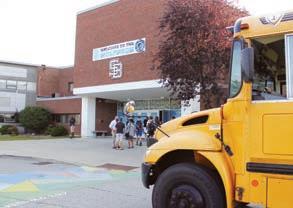


Page 3


LIBERTY DARR STAFF WRITER
Two neighboring school districts in Chittenden County — Champlain Valley School District and South Burlington School District — have seen conflicting enrollment trends over the last five years.
According to a state education profile report published by the Agency of Education in August, total enrollment in Vermont public schools — including pre-kindergarten through 12th grade — has steadily declined between 2003 and 2023 by a little over 6 percent. The decline in kindergarten through 12th grade during that same period was nearly 14 percent, although much of this change occurred pre-pandemic.
Schools in the Champlain Valley School District — the state’s largest district — have kept on par with the statewide trend with total enrollment declining nearly 7 percent between 2019 and 2024, according to data provided by the district. Most notable is Hinesburg Community School, where enrollments in pre-kindergarten through 8th grade dropped more than 11 percent during that timeframe. Shelburne Community School similarly has seen a 7 percent decline and Charlotte Community School, a nearly 6 percent decline.
“We are seeing a slow, steady decline across our elementary schools,” Gary Marckres, chief operations officer in the district,
said. “Specifically, the trend is declining, although that was supported by the demographic report that we had done in 2022, but we are declining a little more than that demographic report suggested that we would.”
South Burlington, meanwhile, has seen a different trend with enrollment slowly but steadily increasing. This year, total enrollment for the school district is roughly 4 percent higher than it was in 2019, according to data provided by the district. Demographic reports commissioned by the district show that those numbers are only set to increase in the coming years.
South Burlington School District administrators have long been aware of the enrollment trend. In 2021, they switched most of their focus to finding solutions to overcrowded elementary schools that, at the time, exceeded the state-recommended 85 percent capacity by more than 100 students.
The school installed eight zero-emission modulars — four at Rick Marcotte Elementary School and four at Orchard Elementary School — that cost roughly $6 million. The portable buildings range in size and use, and school officials have previously said they can help to provide an immediate, albeit temporary, solution to a longer-term problem.
The district’s three elementary schools — pre-kindergarten through 5th grade —


MADELEINE LEVESQUE
COMMUNITY NEWS SERVICE
Even before Election Day on Nov. 5, voting has already begun in South Burlington. The city clerk’s office receives voted ballots through the mail and from its secure ballot drop-boxes at the front and rear of City Hall each day.
“I think South Burlington residents and Vermonters in general should feel really comfortable with the security and integrity of elections,” South Burlington city clerk Holly Rees said.
With multiple ways to vote this year, it’s easier than ever for voters to cast a ballot. Election officials say they are taking multiple precautions to make sure that the ballot is secure.
The Vermont Secretary of State’s Office utilized a mailing agency to send ballots to state residents starting on Sept. 23. Ballots were set to be received by registered voters before the Oct. 1 issuing deadline outlined in Act 60 by the 2021 Vermont General Assembly.
“I think the idea behind getting
ballots to each of the voters is to encourage people to vote,” Rees said. “If we’re removing barriers of having to get to the polls, perhaps more people would vote.”
Prepaid postage is included, and ballots can be tracked through MyVoterPage for the entirety of the voting process, from the time they were sent out to the moment they’re officially counted by a local board of civil authority.
The South Burlington Board of Civil Authority is made up of elected justices of the peace, city council members and the city clerk. The board and city clerk work together throughout the election process to keep voter checklists and tabulating machines up to date and support polling locations on Election Day.
The board meets as needed and for a pre-election meeting where regulations and standards are reviewed. Agendas, minutes and meeting recordings are available via the South Burlington City website.
“Ballots are always processed with at least two BCA members there, and really only done on one preprocessing day, which is open

Join us for Explore Alpha, weekly interactive sessions to discuss life and faith in an informal, fun and friendly environment. Each evening begins with a FREE meal and is open to EVERYONE. Fridays, 6:15 p.m. • Starting Nov. 8
ST. JOHN VIANNEY CHURCH
160 Hinesburg Road, S. Burlington 802-864-4166 stjohnvianneyvt.org/alpha

to the public,” Rees said, “or on Election Night, and that is an open process as well.”
Voters who are choosing to vote in-person at one of South Burlington’s five polling locations are encouraged to bring their ballots to the polls along with them.
Polls will have a limited ballot surplus from the Secretary of State’s Office. Registered voters who were mailed a ballot but don’t bring it to the polls will be asked to sign an affidavit.
Rees, former director of the South Burlington Recreation and Parks Department, says she loves seeing people come out to vote.
“There’s a different energy when people feel empowered to make their choice at the polls,” Rees said. “There’s a place for everybody, whether that means that you know your place is voting, or your place is volunteering, or your place is making sure your neighbors vote as well as your friends.”
If you have questions on the voting process or want to get involved in upcoming elections, contact the South Burlington City Clerk’s Office at 802-846-4105 or visit southburlingtonvt.gov.
Madeleine Levesque is a reporter with the Community News Service, a program in which University of Vermont students work with professional editors to provide content for local news outlets at no cost.
The autumn production of Burlington-based theater company, Girls Nite Out, is Don Zolidis’ acclaimed comedy, “The Bold, The Young, & The Murdered,” which takes its audience to the set of the long-running soap opera,” The Bold and The Young,” which is in its last days of production.
As all the daytime drama unfold, we learn that the soap’s hunky hero has self-esteem issues, its villainous old man is more interested in soup, and its heroines are slightly psychopathic. The executive producer gives the squabbling cast an ultimatum: Complete one episode overnight or the show dies.
But when the director ends up murdered, and other cast members start dropping like flies, it seems the threat might actually come true. Can these misfits discover the murderer before the show is literally killed off?
Orchestrated by veteran director Nan Murat, this fast-paced

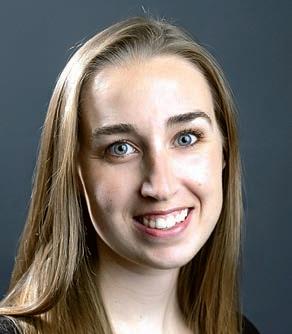
production features a cast of local actors, including South Burlington residents Patrick Cope and Brigid Clary, with some of the cast playing multiple roles in this showwithin-a-show-style farce.
Rounding out the cast are Janet Stambolian, Roya Millard, Meghan Clary and Vonnie Murad from Burlington; Adam Cunningham from Colchester; Jillian




Saturday, November 9th
PreK & Elementary @ 10:00 am Middle School @ 3:00 pm


Meet teachers, visit classrooms & try STEM activities. Learn what makes VDS unique!
Behind the scenes are co-producers Janet Stambolian and Jennifer Warwick, stage manager Kyla Waldron, assistant stage manager Kit Meyers, and set designers Ann Vivian and Cathie Covey. Warwick also serves as costume designer.
The nine-show run at the Main Street Landing Black Box Theater on Burlington’s Waterfront goes from Nov. 8 to Nov. 16, with shows at 7:30 p.m., and some 2 p.m. matinees. Learn more at girlsniteoutvt.com.
We misspelled Will Lambek’s name in several instances last week in our story about Migrant Justice and its protest at Hannaford grocery stores in South Burlington. Also, the group says it is not asking consumers to boycott Hannaford brand milk, only to boycott the store during active protests.
TOMMY GARDNER STAFF WRITER
The Vermont Agency of Education last month released a data-rich report detailing how the state’s public school system got where it is. Now, the agency is trying to figure out where it should go next.
The agency’s Listen and Learn Tour is something of a fact-finding mission for the recently formed Commission on the Future of Public Education. The commission is sending its agency emissaries to seven different high schools along the length of the state before holding a pair of virtual meetings next week.
If the scant attendance at Stowe High School last week was any indication — fewer than 50 people attended what was the closest stop on the tour for people living in Lamoille and Chittenden counties — the best chance for folks in the area to have their voices heard will be the Nov. 4 and 6 virtual meetings.
According to the commission, the goal of the tour is to “engage deeply with local and regional education leaders and school communities to ensure our work aligns with stakeholder needs and priorities.”
Although the state has long seen small class sizes, the report suggests the ratio became even more pronounced during the pandemic. This may be problematic, the report suggests.
“It is important to note that the infusion of federal funding to address the pandemic may have influenced the staffing levels during this time period and raises questions about the sustainability of staff levels in future years,” the report states.
• Smaller supervisory unions and school districts have higher percentages of students in special education and students who are economically disadvantaged. It’s a statewide demographic picture that looks much the same for the 2023-23 school year as it was going into the pandemic, in the 2019-20 school year.
“The infusion of federal funding to address the pandemic may have influenced the staffing levels during this time period.” — Agency of Education
To register, visit the Listen and Learn Tour page at education.vermont.gov/agency-education-listen-and-learn-tour. As of press deadline, no links were available for the virtual sessions. The online version of this story will be updated when the agency provides those details.
The listening tour was preceded by the “State Education Profile Report,” published Aug. 30 and borne out of a statewide tour that Interim Education Secretary Zoie Saunders made earlier this year. The agency is touting the report as “a first, high-level look at the state of education” in Vermont.
The report contains data-driven snapshots of key education indicators, like enrollment, demographics, student test scores, staffing levels and education spending.
Among the report’s key findings:
• Enrollment in kindergarten-12th grade over the past two decades has declined by 14.2 percent, much of it occurring pre-pandemic. Last year, Vermont had a publicschool enrollment of 82,828 students, spread out over 288 public schools in 119 districts, which are part of 52 supervisory unions.
There were an additional 9,679 students attending independent schools, about one-third of whom get public tuition. And there were 3,505 home-schooled students.
• Vermont has some of the smallest schools in the country, ranking 46th in terms of school size across the U.S., but has the nation’s highest staffing levels, in terms of teacher-to-student ratios. The report ties this to supervisory union or school district size — the smaller the district, the more teachers per 100 students.
and your South Burlington neighbor, ready to help you navigate the complexities of today’s housing market.
Carrie is a phenomenal agent; she listens, understands, and knows the market and is always accessible. She’s also a great person!
— TIM R., WILLISTON
My home value report provides data and insight to sell your home smarter.

• Larger districts tend to pay their employees more than smaller districts, with salary differences as high as $10,000 or more, on average, for some staff.
• However, smaller districts tend to pay more per pupil, since spending is linked to student need, and smaller districts with higher levels of poverty spend more per student. Economic disparity may lead to gaps in academic performance, too — the report notes higher performing and lower spending districts tend to have fewer economically disadvantaged students.
• Vermont students generally test as well as or better than students in other states taking the same standardized test — the National Assessment of Educational Progress, taken by all U.S. students in fourth and eighth grades.
This is especially true in eighth-grade reading, where Vermont ranks fifth — fourth graders are ranked 11th. Math scores are more lackluster, with eighth graders ranked 21st and fourth graders ranked 28th.
The State Education Profile Report can be read on the Commission on the Future of Public Education’s page of the agency website, along with the information on next week’s virtual listening tour sessions.
The commission was formed with the passage of this year’s education yield bill, the annual property tax legislation, which was enacted over Gov. Phil Scott’s veto.
The 13-person commission includes a swath of people from Vermont’s local and state education and government sectors — including appointed and elected officials in Agency of Education and the Legislature, professional and elected officials in local school districts, and people involved in education-oriented organizations.
The commission’s task, per the bill, is to “study the provision of education in Vermont and make recommendations for a statewide vision for Vermont’s public education system to ensure that all students are afforded substantially equal educational opportunities in an efficient, sustainable, and stable education system.”

Carrie Paquette







South Burlington police are investigating a hit-and-run at the corner of Airport Drive and White Street near airport parking that took place Oct. 19 around 10 a.m.
A 66-year-old woman was hit by a car while crossing the street with her dog near her home. She suffered significant injuries and was hospitalized, police said.
The vehicle — a compact
light green car, possibly a Toyota — failed to stop and left the scene. The victim said the Vermont license plate possibly ended in one of the following numbers: 524, 517 or 514. It also might have a black front fender on the driver’s side.
If you have any information about this incident, contact the South Burlington Police Department at 802-8464111.
South Burlington’s Community Newspaper Since 1977 A publication of Vermont Community Newspaper Group LLC otherpapersbvt.com
Advertising Director
Judy Kearns judy@otherpapersbvt.com (802) 864-6670 x21
Advertising Wendy Ewing wendy@shelburnenews.com (802) 985-3091 x12
News Editor Tommy Gardner
Staff Writers
Aaron Calvin Liberty Darr Patrick Bilow
Production Manager Stephanie Manning stephanie@shelburnenews.com
Editor/Publisher Gregory Popa gpopa@stowereporter.com
Billing inquiries Leslie Lafountain leslie@stowereporter.com (802) 253-2101
Advertising submission deadline: Thursday at 5 p.m. advertising@otherpapersbvt.com classifieds@otherpapersbvt.com
Editorial submission deadline: Friday at 5 p.m. news@otherpapersbvt.com
Calendar submission deadline: Friday at 12 p.m. news@otherpapersbvt.com
Contact: 1340 Williston Road South Burlington, VT 05403 (802) 864-6670
right to refuse advertising and editorial copy.
Total incidents: 249
Agency / public assists: 21
Directed patrol: 14
Traffic stop: 8
Accident: property damage: 8
Alarm: 15
Foot patrol: 11
Suspicious event: 13
Retail theft: 15
Motor vehicle complaint: 12
Welfare check: 10
911 hangup: 4
Fraud: 4
Noise violation: 4
Juvenile problem: 4
Intoxication: 3
Animal problem: 3
Trespass: 11
Domestic: 5
Disturbance: 6
Field contact: 6
Drug possession: 2
Accident: insurance purposes: 7
Leaving the scene: 8
Larceny: other: 3
Larceny from a vehicle: 7
Stolen vehicle: 2


Mental health: 5
Threats: 5
Found/lost property: 5
Arrests:
Oct. 21 at 6:56 p.m., Thomas Lapine, 37, no address provided, was arrested on an in-state warrant on Dorset Street.
Oct. 22 at 11:03 a.m., Storm Choiniere, 33, of Highgate, was arrested for domestic assault and disorderly conduct on the Williston Road overpass.
Oct. 23 at 6:34 p.m., Mark A. Rich, 53, of Burlington was arrested for retail theft, possession of stolen property and driving without a license on Dorset Street.
Oct. 23 at 7:24 p.m., Dakota J. Whitehouse, 29, no address given, was arrested for disorderly conduct by electronic communication or phone on Shelburne Road.

Oct. 23 at 7:24 p.m., Nicolette A. Haverty, 24, of Braintree, was

arrested for violating conditions of release on Shelburne Road.
Oct. 24 at 11:40 a.m., Trevor Hoag, 49, no address provided, was arrested for retail theft and for an attempted misdemeanor on Hinesburg Road.
Oct. 24 at 2:41 p.m., Jason M. Cromie, 33, of Burlington, was arrested for retail theft on Dorset Street.
Oct. 25 at 9:50 a.m., Donovan L. Desmaris, 30, no address provided, was arrested for violating conditions of release on Dorset Street.
Oct. 26 at 12:04 a.m., Richard Verner, 46, of Burlington, was arrested for leaving the scene of an accident at Kennedy Drive and Dorset Street.
Note: Charges filed by police are subject to review by the Chittenden County State’s Attorney Office and can be amended or dropped.

















Guest Perspective
Meaghan Emery
After attending the Burlington International Airport’s workshop on the new 2029 Noise Exposure Map at Chamberlin Elementary School on Oct. 23, I learned the following day that Vermont Air National Guard had held a press conference earlier that evening to unveil the proposed plan for regular use of afterburners, supposedly — and it remains unproven — for the benefit of Winooski residents.
With the stealth of the F-35, the Air Guard has dropped this new nightmare scenario on the people of Chittenden County, and most acutely on the residents of South Burlington, as has always been the case.
Last Wednesday night, Col. Dan Finnegan and other members of the Guard did not initiate discussion with members of the public on this proposed change in operations. Neither did airport director Nic Longo nor their consultants. The Air Guard’s one chart, tucked in between all the others, was not enough to inform the community of this big change and, importantly, the final map at the workshop will be irrelevant if this new operational change is approved after an accelerated environmental study to take place early next year.
It will be difficult for residents and representatives to learn more. Since there is little useful information available online, I attended the second night of the workshop at Winooski High School to ask questions. That night, in response to my questions, Finnegan expressed with a smile how “great” the use of afterburners would be for people. He said that Winooski will no longer be in the incompatible noise zone determined by a computer-generated line.
That line will, of course, move somewhere else, and South Burlington residents, who are already experiencing the most acute impacts of noise and air pollution, will be the collateral damage of this proposed change, as he finally acknowledged.
According to Finnegan, the impact on residents will not be studied in this accelerated
version of an environmental impact statement. Only noise. Thousands of South Burlington residents will simply be numbers on a chart showing a decrease — down from the current 5,515 people — which could feasibly be the case since our housing is less dense here.
However, no numbers can remove the devastation that this is causing folks here in the Chamberlin neighborhood.
A natural question would be what the new environmental impact statement will show in terms of changes in ground level noise. Since the prior one does not provide this data, the answer to this question is undoubtedly nothing. All that human devastation will be statistically nonexistent.
In addition to not providing on the ground measurements, the measurements of decibels they do provide obscure the actual noise levels. The Air Force does not provide any actual data specific to the use of afterburners.
The little information there is about ground level impacts in the statement indicate that they do not have to report them (decibel level or pollutants) and more sleep disturbance and hearing loss for people living adjacent to the airfield, with Kirby Road and Airport Parkway and Shamrock
Road being the most impacted, by far — and far more currently than in Winooski. This is the precious little information indicating future ground level impacts provided in the 2013 environmental impact statement. Air pollutants from take-offs are not measured at the ground level either. The only reference to ground-level pollutants is for stationary source emissions. So, there will be no data about air quality for people on the ground next to the airport. That is, on our roads and walking paths, in our yards and in our bedrooms and living rooms with windows open. We will not know how the increased emissions from afterburner use will be directly affecting our neighbors. People are measuring 110 decibels in their homes currently, without afterburners. It’s clear that the increased noise levels will be ear-splitting. That level of noise will last 15 seconds, according to what Finnegan told me last Thursday. He disputed the obvious truth that noise levels for those adjacent to the airfield will be incompatible with residential standards, and he pivoted when I reminded him that Vermont Air National Guard fudged the data when applying






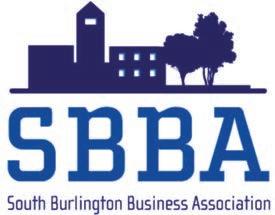








To the Editor:
It is still biking season and I just wanted to say thank you to all the drivers who passed by me this spring, summer and fall. Thank you for giving me the four feet of room required by Vermont state law.
You may not realize this but if you, as a driver, simply put the left wheels on the yellow line you’re likely giving me and others enough room to feel safe. I drive far more than I cycle and know there are careless cyclists, as well as drivers, out there on
continued from page 5
for the F-35 many years ago. They actually inserted “N/A” on the line asking whether there were any homes in the future impacted area around the airfield.
They erased our homes in their initial application, and no authority is measuring the actual impacts on health.
Neighbors are in shock. Some of them are already suffering from hearing loss, extreme tinnitus and body tremors. And so, we must say to our political leaders, clearly and without ambiguity, that it is absolutely wrong that the government is subjecting anyone to these daily year-round
local roads, but I just wanted to let you know that when folks pass me and other cyclists closer than four feet it feels as if I could reach out and touch the vehicle passing me. That’s scary.
When I’m on my bike I wear bright clothing, use lights and always ride as far to the right as conditions and the road allow. I also use a mirror, which is very handy for allaying any fear I may feel as I hear cars approaching. Most drivers give plenty of room. Those that don’t baffle me.
“Was that driver on their phone?” “Were they trying to hurt me, or worse?” I’m aware that it can be slightly annoying
to slow down, briefly, to pass us safely, but please remember that a quick touch to the accelerator makes up the “lost time” in a matter of seconds.
Thanks for your attention, and for caring about us, just a little, as you move past us. And cyclists, thank you for doing your part by not riding side-byside, not riding erratically and making yourselves visible as we share the road with vehicles.
Ned Getchell
South Burlington
To the Editor:
conditions, and especially its civilian population who do not receive a salary, noise protection or health coverage benefits from the U.S military. As I told Finnegan last night, military personnel, like those of us in academia, choose the lifestyle of the nomad. He and I follow our jobs. Our residents did not make that choice.
It is wrong and inhumane, and their mission to find a responsible solution for the community impossible.
Meaghan Emery lives in South Burlington.
This year, the South Burlington City Council did not provide a donation to the The Infinite Youth Center that has been operating at the University Mall in South Burlington for over three years. I want to clarify that I’m not upset or blaming the city council for this. The situation arose from different funding streams and some miscommunication. I recognize that I made an error in assuming the city would consistently support us because we are making a positive impact, but that was never guaranteed. I also believed that organizations in South Burlington would rally behind us, but I realize now that this was an assumption I needed to correct.




That said, some city organizations and other individuals have been there for The Infinite Youth Center without asking for help.
On a positive note, we are still operational. A foundation from another state unexpectedly sent a donation because they believe in and support our mission. This experience has taught me that I cannot expect others to share my passion; instead, I should only set expectations for myself.
Dr. Travia Childs
South Burlington
Krasnow’s leadership is what city needs
To the Editor:
I’m excited to voice my support for Emilie Krasnow as state representative for Chittenden-9 House district in the upcoming General Election. Krasnow isn’t just a politician. She’s a working Vermonter who understands the challenges we face and is dedicated to making a difference.
Her commitment to putting constituents first is evident in every aspect of her work. Krasnow doesn’t just listen, she actively seeks out diverse perspectives and engages thoughtfully with the community. Whether attending local events, hosting forums or responding to emails, she is always accessible and genuinely interested in our concerns.
Representation matters to me, and her inclusive leadership style ensures our voices are heard in Montpelier. She tackles tough issues with a pragmatic and empathetic approach. Her

advocacy for affordable housing, environmental sustainability and economic opportunity reflects her deep understanding of what matters most to our community. As we approach the election, I urge my friends and neighbors to support Krasnow. Let’s elevate leaders who not only reflect our values but actively work to improve our community and state. Her leadership is exactly what South Burlington needs to move forward together.
Chris Lawson
South Burlington
Why is no one talking about the national debt?
To the Editor:
The U.S. national debt now stands at close to an almost inconceivable $36 trillion. That works out to more than $105,000 per person. The interest that will be paid on the national debt this year is more than what we will spend for national defense. Why is Congress not talking about this? I suspect because reducing spending on programs or raising taxes is unpopular. When I write to our congressional leaders about this topic, I am met with deafening silence. If the U.S. did not have an interest payment, think of what more could be accomplished in this country or how much lower our taxes could be. I would encourage you to write to our representatives in Congress to ask them what they are doing to reduce the national debt.
Scott Pennington
South Burlington

BANG and Combo Ads
DEADLINE: Thursday, Nov. 21, 5 p.m.
Display and Classified Ads
DEADLINE: Friday, Nov. 22, Noon
Editorial Submissions
DEADLINE: Friday, Nov. 22, Noon
Guest Perspective Margaret MacLean
Roxbury parents can meet most of the challenges of school mornings, from organizing breakfast to helping their children remember assignments and lunches. Warming up the car for the up to 4-mile drive to the nearest bus stop is also on the to-do list.
But one part is breaking their hearts: the 2 hours and 15 minutes per day their children now spend on the bus getting to and from school in Montpelier. Endless hours on a school bus are not what they want for their children. It’s not what a Vermont childhood should be.
When the Montpelier and Roxbury school districts merged under the school consolidation law Act 46, Roxbury residents were assured their rural school would receive equal treatment in the new district. But since then, the Montpelier-dominant board made the sudden decision to close Roxbury’s K-4 elementary school last spring, and families in the small town have come face-to-face with the inequities caused by rural school closures. Even the smallest children must endure punishingly long bus rides, made worse by the fact that in this 42-square mile town filled with dirt roads, Montpelier’s buses only drive on pavement.

Closing schools doesn’t save money. Children from closed schools still need an education. National research shows that per-pupil spending tends to increase when schools close, while anticipated cost efficiencies from economies of scale rarely materialize. Transportation costs increase, the promised wider opportunities cost money and empty public buildings need to be maintained. School closures most often result in the redistribution of where money is spent, rather than financial savings.
Closing schools increases inequity. Research finds that students experiencing poverty, students of color and those with special needs are most negatively impacted by school closures.
Closing schools destroys communities. In communities where schools are closed, research points to depopulation, declining home values, eroding social capital and problems with attracting and retaining families with children.
Scapegoating small rural communities for Vermont’s fiscal crisis flies in the face of equity and is not based on a factual analysis of the problem.
That’s right. Montpelier’s buses do not go on dirt roads.
But beyond busing issues, many parents feel dismissed by a now-distant Montpelier school system, and the town is still searching for a sustainable use for the school building that was once the heart of their community.
Roxbury greenhouse owner Tom Frazier put it bluntly. “We merged with Montpelier in good faith. The situation we are in now, they have closed our school — is a nightmare.”
Roxbury is not alone. Across the U.S., when rural schools have been targeted for closure, similar patterns have emerged. Research shows that closing schools is damaging to children. Studies of school closures across the U.S. show that students:
• Experience a loss of connectedness with peers and community.
• Face increased mental health challenges.
• In the short term, have lower test scores, worse attendance and behavioral issues.
• In the long term, are less likely than their peers to complete college and secure a job
• Face negative impacts from declining family and community engagement.


Closing schools without due process results in unintended consequences. An inclusive, open-minded analysis of the pros, cons and alternatives to school closure is crucial to avoiding unintended consequences. Examination of winter transportation (likely to make long bus rides even longer), creative options such as retaining rural schools to house licensed child care, pre-school and K-2 students, additional community-oriented alternatives for school buildings, and other research should be documented and presented as part of a choice for voters. And a town vote on closing a town’s school is an essential element to ensure buy-in to a balanced, sustainable and fair solution.
Vermont’s children deserve better. Research shows that multi-age classrooms are developmentally appropriate settings for young children, and many small schools are cost effective and among the best performing schools in Vermont. Small schools for elementary students can be exemplary schools.
Scapegoating small rural communities for Vermont’s fiscal crisis flies in the face of equity and is not based on a factual analysis of the problem. Enrollment decline exists in schools of all sizes, all over Vermont. Schools of all sizes should be expected to step up to address enrollment decline — not just look to closing their neighbors’ smaller schools as an easy fix. Vermont must provide an excellent public education system that prepares children for success, supports families and thriving communities and is delivered at a cost hard-working Vermonters can afford. Leaders’ sense of urgency in finding new


















“Bruce Roy is committed to working with me to make Vermont a more affordable place to live, work, raise a family, do business and retire in.
Colonel Roy has already dedicated much of his life to serving our country in uniform, and I know he would continue to serve Vermonters well in the State Senate. I encourage the people of Chittenden County to send Bruce to the Senate to help build a stronger Vermont.”
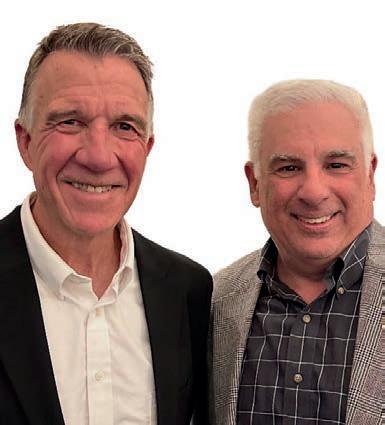


Law school scholar talks recent court decisions

PUBLIC INVESTMENT IN CHILD CARE HELPS PREPARE OUR LITTLEST VERMONTERS TO DO BIG THINGS – STARTING ON THEIR FIRST DAY OF KINDERGARTEN.
LEARN HOW PUBLIC INVESTMENT IN CHILD CARE INCREASES SCHOOL READINESS FOR VERMONT KIDS:


The League of Women Voters of Vermont presents the lecture, “Recent Supreme Court Decisions,” on Wednesday, Nov. 13, at 7 p.m., with Rod Smolla, president of Vermont Law School. He will discuss the potential impacts of five important court decisions since 2022, including a decision to grant near total legal immunity for any official actions taken the president of the United States. The league’s lecture series, in its ninth season, is designed to bring speakers to discuss contemporary issues related to democracy and social justice. This will be a virtual presentation. To register, go to kellogghubbard.org.
MACLEAN continued from page 7
models is merited and laudable. However, the burden of change must be equitable and addressed by communities large and small. Closing Vermont’s rural schools is an “answer” that does not fix the problem. It simply creates different ones.
Margaret MacLean is a retired Vermont teacher and award-winning principal.
She is the founding executive director of the Vermont Rural Education Collaborative, a past employee of the Rural School and Community Trust and served on the Vermont State Board of Education. She lives in Peacham. If you would like to receive a copy of the research supporting these points, email vtschoolsrock@gmail. com.
• West Point Graduate • MBA Temple University
• Graduate of Army Command and General Staff College
• Georgetown University Graduate Program
• 22 years US Army active duty
• 16 years Gov’t Defense Industries
• Husband and Father of 4

Empower parents, support school choice SAFETY
Secure borders, back law enforcement CONSTITUTION
Protect individual rights RELIABLE LEADERSHIP 43 years of proven experience

Guest Perspective
Pattie McCoy
How much will the Clean Heat Standard cost? That is the question those of us who are concerned about this legislation’s unknown impact on Vermonters’ pocketbooks have been asking for over a year. But in many ways, it is the wrong question.
The right question is: How many Vermonters’ financial livelihoods are we willing to sacrifice to implement the Clean Heat Standard?
This is the correct question for one key reason: The more we learn about the effects of this legislation, the harder it is to deny that it is much worse than proponents said it would be — especially for the most vulnerable Vermonters.
Put simply, the Clean Heat Standard was a bill that requires fossil-fuel importing businesses to pay a penalty to offset the carbon emissions of home heating fuel. The law was allegedly designed to reduce the reliance on fossil fuels. Money collected from these penal-
ties would, in theory, be used to help Vermonters transition to clean heat methods. The law directed the Public Utility Commission to come up with a framework to implement this scheme.
In fact, when Vermont Agency of Natural Resources Secretary Julie Moore said the law could increase home heating fuel prices for Vermonters by about 70 cents per gallon, many legislators had a meltdown and chastised Moore for fearmongering. Addison County Sen. Chris Bray, one of the key architects of the law, said the estimate was “incomplete and inaccurate.” He suggested Moore should not have preempted the upcoming professional studies on the program’s cost.
program would cost about $10 billion by 2050, or as much as $4 per gallon of heating fuel, which would effectively double the current cost to keep Vermonters’ homes warm in the winter.
If there is still a supermajority, this draconian and unaffordable scheme could still pass
once again over the governor’s veto.
Even on the low end, the added cost would be about $1.70 more per gallon. Bray, who just months earlier challenged Moore’s cost projections, suddenly found himself with a case of foot-in-mouth syndrome. Bray proclaimed, “I, for one, am not interested in building a program that adds $1.70 to a gallon of heating fuel. That would be a real problem for many Vermonters.”
Well, this past month, one of those professional studies was released. The verdict? The
Let me rephrase that: Bray, the law’s architect, is no longer interested in building the program he already passed a law to build. Got it?
Bray’s attempt to walk-back

his earlier stance, which comes during an intense reelection battle, is exactly what those of us in the minority party have been screaming from the mountaintops for over a year: this legislation is simply irresponsible.
To be fair to Bray, it is certainly not all his fault. The blame also lies with the dozens of other majority party legislators who blindly championed this legislation. Now, after over a year of unnecessary finger-pointing, finally, proponents of the Clean Heat Standard like Bray are allegedly waking up — just in time for their November reelection.
Here is what Vermonters need to know: This proposal will come back to the Legislature in January. If there is still a supermajority, this draconian and unaffordable
scheme could still pass once again over the governor’s veto.
What can be done to stop it? A start would be to elect legislators concerned about Vermonters’ cost of living and who do not push pie-in-the-sky programs without first understanding how they will impact them. The November election is the only chance Vermonters have to stop the Clean Heat Standard and other anti-affordability policies like it.
That is just my two cents — or perhaps my $4.
Rep. Pattie McCoy is the Vermont House Minority Leader. She represents Poultney, Ira and a portion of Wells in the Vermont House, where she serves on the House Committee on Transportation.
Ring Sizing • Cleaning • Stone Tightening • Rhodium Plating
Performed by Our Graduate Gemologists



Our feisty, first-rate weekly newspapers — Stowe Reporter, News & Citizen, The Other Paper, The Citizen and Shelburne News — need an experienced full-time reporter to cover dynamic, vibrant communities in Chittenden County.
Benefits include health insurance, holidays and vacation. The ideal candidate is flexible, motivated, curious and reliable. Enterprise reporting is prized.
Come work in a fast-paced, high-energy environment with top-shelf staff.
Send resume/clips to: Tommy Gardner tommy@stowereporter.com
More information: journalismjobs.com/ 1688015-reporter-


“Sorting the Spin: How to Spot Made-Up, Murky, and Misleading Information” is the next in the series of Education and Enrichment for Everyone talks.
It will be held at Faith United Methodist Church, 899 Dorset St., South Burlington on Friday, Nov. 1, 2-3:05 p.m.
Learn more at eeevermont.org.
On Thursday, Nov. 14, Ohavi Zedek Synagogue and the Lost Mural Project will host a concert featuring saxophonist Marty Fogel and his quintet, Thread of Blue.
The group includes Tom Cleary on piano, Dan Silverman on trombone, Jeremy Hill on bass and Geoff Bernstein on drums. The program will include improvisational jazz music emanating from Jewish sources: liturgical melodies, original pieces inspired by religious text, Eastern European tunes and original arrangements of songs by American Jewish composers Jerry Bock, Leonard Bernstein, George Gershwin and Kurt Weill.
The performance begins at
7:30 p.m. at the synagogue, 188 N. Prospect St., in Burlington. Proceeds benefit The Lost Mural Project and Full Circle Preschool. Learn more at bit.ly/4fmGPdZ
Holiday bazaar features baked goods, crafts
The All Saints Episcopal Church, 1250 Spear St., South Burlington, is holding its holiday bazaar on Saturday, Nov. 2, 9 a.m.-2 p.m.
The sale will feature antiques and uniques, baked goods, books, crafts and Christmas decor, jewelry. There will also be a silent auction, yard sale and luncheon.
Alpha film series shows at St. John Vianney
Discuss life and faith in an informal, fun and friendly environment at the Alpha weekly film series, St. John Vianney Parish Center, 160 Hinesburg Road, in South Burlington, beginning on Nov. 8, at 6:15 p.m.
Each session begins with a meal, followed by a brief video on a broad question of the Christian faith. Guests are welcome to participate in a small group discussion and share views on the topic. All faiths are welcome.

Talk about irony. A foursome of Halloween skeletons adorns a
To register, visit stjohnvianneyvt.org.
Note that the series will not be held Friday, Nov. 29. The Friday, Dec. 20, session has been moved to Wednesday, Dec. 18. For information, contact Connie McDonald at sjvgoodnews@gmail.com or call 802-8644166.

Holiday bazaar
At Faith United Methodist Faith United Method Church of South Burlington will host its annual holiday bazaar on Saturday,
Nov. 9, 9 a.m.-1 p.m., 899 Dorset St. Featured this year are a large variety of adult and children’s new and like new winter coats for $10-$20 each, a huge cookie walk, fudge, pies, to-go soup, and lots of holiday and home decor. All proceeds will go directly to the


KLARA BAUTERS VTDIGGER
The Green Mountain Transit Board of Commissioners approved a slate of changes to the bus service last week that will go into effect Dec. 2. The decision will eliminate a commuter route between Jeffersonville and Burlington and reduce or eliminate weekend service, with additional significant service cuts likely still to come.
The board was following through on a proposal made by the transit provider’s management at its August 2024 meeting to cut at least 25 percent of its local and regional bus services. GMT aims to save up to $3 million, which it said would help close a projected gap in its operating budget.
GMT surveyed riders earlier this summer, which is still available online for riders to complete, on what service they want to preserve and what service would potentially be more acceptable for reduction.
“What we heard was that there would be a preference for weekday service over weekend service and a preference for local service over commuter service,” said Clayton Clark, the general manager of Green Mountain Transit.
The first phase of service reductions includes the elimination of all four runs of the #36 Jeffersonville Commuter, a route that runs between Jeffersonville and Burlington. According to Green Mountain Transit, the Jeffersonville Commuter route has the highest cost per passenger of all routes in the service area, with each trip costing $63.18.
GMT officials explored options to reduce expenses for the route, halving the daily trips from four to two. That approach was determined to be too costly, however, according to Clark. He said members of the Vermont Agency of Transportation will be riding the Jeffersonville commuter to talk to the people that currently use the route, starting tomorrow.
“They’ll be talking to the riders about different transit options that they support, which includes vanpools and carpools,” Clark said.
The remaining service changes focus on Saturday operations, aiming to cut costs by cutting down on weekend overtime for drivers.
“A higher proportion of the drivers are working overtime on Saturday than during other days so our labor cost on Saturday is higher,” said Clark. “So, in addition to it being lower ridership, it’s also higher cost.”
The board also approved an increase to the Americans with Disabilities Act (ADA) fares in Chittenden County. The fares will rise from $3.00 to $4.00, with the change slated to take effect on Jan. 1, 2025. Local transit officials estimate that a proposed fare increase for Americans with Disabilities Act (ADA) services could generate an additional $40,000 in revenue, assuming ridership demand remains.
During the next two meetings, held on the third Tuesday every month, the board will decide on possible service reductions regarding the link between Montpelier and Burlington.
“I anticipate that there will be a reduction in the number of runs
COMMUNITY NOTES
continued from page 10
South Burlington Food Shelf.
Faith UMC is accepting donations, including holiday-themed decor, gently used toys, puzzles, jewelry, kitchen/household gadgets and quality re-giftable items on Sunday, Nov. 3, from 10:30-11:30 a.m. at the church.
Contact Diane at events@ faithsbvt.org with any questions or a different drop-off time.
Author talks about future of transportation
Join the South Burlington Energy Committee on Thursday, Nov. 14, 6:30-8 p.m., for a special book discussion with Paris Marx, author of “The Road to Nowhere: What Silicon Valley Gets Wrong About the Future of Transportation.”
The event will be held in-person at the South Burlington Public Library and on Zoom. Refreshments will be served.
“Road to Nowhere” exposes
German consulate
between Montpelier and Burlington that will be effective in late February or March,” said Clark.
• Reduction of the #5 Pine Street on Saturdays to service every 60 minutes
• Reduction of the #8 City Loop on Saturdays to service every 60 minutes. This includes an adjustment to serve both McAuley Square and Fern Hill Bus Stops on the Saturday runs.
• Elimination of all 4 runs of the #36 Jeffersonville Commuter
• Elimination of Saturday Service on the #10 Williston/ Essex
• Elimination of the #3 Lakeside Commuter that is replaced with an additional morning inbound run on the #5 Pine Street that allows passengers to connect with service that departs the Downtown Transit Center at 6:20 a.m.
• Eliminate the following runs that depart the Downtown Transit Center on the #6 Shelburne on Saturdays: 6:30 p.m., 9:15 p.m. and 10:30 p.m.
• Eliminate the following runs that depart the Downtown Transit Center on the #7 North Ave on Saturdays: 6:30 p.m., 9:15 p.m. and 10:30 p.m.
• Eliminate the following runs that depart the Downtown Transit Center on the #9 Winooski: 6:00 a.m., 7:00 a.m., 9:15 p.m. and 10:30 p.m.
• Eliminate the following runs that depart the Downtown Transit Center on the #11 Airport: 6:45 p.m., 7:30 p.m., 8 p.m., 9:15 p.m. and 10:30 p.m.
flaws in Silicon Valley’s vision for the future of transportation, like fee for services, automation and “green” solutions.
Marx offers a vision for a more collective way of organizing transportation systems that considers the needs of poor, marginalized and vulnerable people. The book argues that rethinking mobility can be the first step in a broader reimagining of how we design and live in future cities by creating streets that allow for social interaction and conviviality.
Means of transit should be determined by community needs rather than algorithmic control, guided by the search for quality of life rather than for profit, Marx argues.
The library has copies of the book at the circulation desk. It is also available from the Green Mountain Library Consortium.
Get the Zoom link or learn more at southburlingtonlibrary. org.

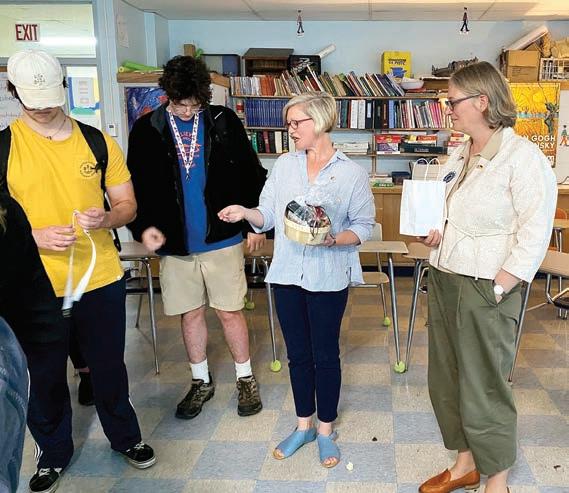

DEBORAH J. BENOIT
UNIVERSITY OF VERMONT EXTENSION
Fall foliage color has peaked, and leaves are falling. Temperatures are dropping and it’s time to put the garden to bed. It is also a perfect opportunity to prepare for spring. What you do this fall can provide big benefits when the garden wakes up next year.
Spring flowering bulbs will be the most visible reward for work done in the garden now. If you don’t have early blooming plants such as hellebores or witch hazel, consider adding spring blooming flowers such as low growing crocus and snowdrops or showy daffodils and tulips. They bloom early (snowdrops will emerge beneath the snow) and provide welcome color at the beginning of the season. If deer are visitors to your yard, keep in mind they’ll love nibbling on tulips but will avoid daffodils.
Plant spring bulbs in clumps for a colorful splash or scattered between perennials for a sprinkle of color. If you have the time,
create a new bed or two, adding spring blooming bulbs for an early show. As a bonus, once you’ve prepared the bed for bulbs, it will be ready and waiting come spring for additional plantings.
If you’re planning to add new beds next year, you can get a head start now. Mark out the area and trim grass or weeds as close to the ground as possible. Then cover with a layer of moistened cardboard or multiple sheets of newspaper. Top with a layer of mulch to keep everything in place. By the time you’re ready to plant next spring, the grass or weeds will be smothered and the bed ready to be prepared for planting. Fall is a good time to have a soil test done. Why do a soil test? Without knowing the nutrients available in your soil, you might be adding unnecessary amendments and omitting those needed. A soil test can tell you your soil pH and available phosphorus (P), potassium (K), calcium (Ca), magnesium (Mg), micronutrients, and more, along with recommendations for amendments and
fertilizer for specific crops. The University of Vermont Extension offers soil testing services. You can use a kit (available at UVM Extension offices and many garden centers) or print out a form from the website and mail in a soil sample — just 1/2 to 1 cup. Follow the directions at go.uvm. edu/soiltest.
You’ll thank yourself next spring if you clear weeds from existing beds now and add amendments recommended in the results of your soil test.
If you lost the war on weeds
this year, you can get ahead of them now for next year’s garden. Most annual weeds have begun to die back and should be easier to pull. Just watch out for any seedheads. Avoid putting them in your compost pile to slow the spread of weeds to your garden in the future. Carefully remove seed heads and put them in the trash along with any diseased plant material.
The last item on your fall to-do list is storing garden tools for the winter. Take the time to clean them and sharpen those that
need it. While doing that, inventory your garden tools. Over the winter, you’ll have time to repair or replace items and purchase what you don’t already have. When spring arrives, you won’t have to make an emergency run to the garden center.
It’s always sad to see the end of the gardening season but doing a few simple tasks now can put you ahead of the game come spring.
Deborah J. Benoit is a UVM Extension master gardener.
The Outside Story
Jenna O’del
In cartoons, when a turtle is spooked, it retreats into and closes its shell. While used for comic effect, this imagery is based in fact — although not all turtles are capable of this protective feat.
In the Northeast, there are three native turtle species that have hinged shells: Blanding’s turtle (Emydoidea blandingii), common musk turtle (Sternotherus odoratus) and eastern box turtle (Terrapene carolina carolina). Turtles have a lower shell, called a plastron, and an upper shell, or carapace. In hard-shelled
turtle species, the shells are made up of bony plates that are covered with scale-like scutes. Scutes are made of keratin, the same protein found in our fingernails and hair and give turtle shells their color. Hinged-shell turtles have a split in
LAUREN READ
CORRESPONDENT
Field hockey
(3) South Burlington 3, (6) Essex 0: The South Burlington field hockey team advanced to the D-I semifinals with a win over Essex on Friday, Oct. 25.
Bella Gordon, Rosa DiGiulian and Oli Roy each scored for Wolves (12-3) in the quarterfinal victory.
South Burlington faced No. 2 Bellows Falls on Wednesday in the semifinals after deadline. The two teams played once during the regular season, with the undefeated Terriers getting the win.
Sawyer Bailey and Kayla Kim each had an assist in the win over Essex, with Amber Rousseau in goal.
Girls’ soccer
(10) South Burlington 1, (2) Essex 0 (OT): South Burlington scored an upset in the high school girls soccer quarterfinals on Saturday, Oct. 26.
continued from page 1
have seen an increase of roughly 200 additional students since 2019. Chamberlin Elementary School has seen a nearly 6 percent increase in enrollment, while Rick Marcotte Central School has seen a 2 percent increase. But enrollment at Orchard Elementary School has decreased by roughly 7 percent. That elementary school also does not offer a pre-kindergarten classroom.
Keeping with the trend, the city’s Frederick H. Tuttle Middle School has also seen an increase of about 3 percent.
While elementary school statistics for both school districts may be different, high school enrollment has declined at both Champlain Valley Union and South Burlington high schools. Total enrollment at CVU has dropped 3 percent since 2019, while South Burlington High School has seen an 11 percent drop in student population.
Total enrollment at South Burlington High School in 2024 is 818. At CVU, it is 1,268.
For Champlain Valley, Marckres explained that those numbers make sense since the 9th-grade classes coming into the high school simply have not been as big as the senior classes going out.
But the root of the problem, he said, is much larger.
Interim superintendent Adam Bunting called the enrollment trends in the district since 2016
Reese Gordon scored just four minutes into overtime as Wolves beat Essex 1-0.
South Burlington advanced to face No. 6 St. Johnsbury in the Division I semifinals on Wednesday after the newspaper went to press.
The two teams met once in the regular season and the Hilltoppers and Wolves settled for a 1-1 tie, setting up up quite a rematch to determine which team advances to the finals.
Katie Williamson had an assist on Gordon’s game winner over Essex, while Gillian Bachand stopped seven shots.
Boys’ volleyball
(1) South Burlington 3, (8) Montpelier 0: The undefeated South Burlington team opened its postseason run by beating Montpelier in the first round on Thursday, Oct. 24.
The Wolves beat the Solons in straight sets to advance to the semifinals on Wednesday, after press time, where they will face No. 4
Mount Mansfield.
South Burlington beat the Cougars, 3-0, in both regular season meetings.
Football
(4) Middlebury 31, (5) Burlington/South Burlington 7: The South Burlington-Burlington football team fell on Friday night to No. 4 Middlebury in the quarterfinals.
Shamus Leggett hit Ryan Audibert with a 61-yard touchdown catch for the lone score for the SeaWolves.
South Burlington-Burlington finished the season with a 6-3 record.
Girls’ volleyball
(2) BFA-St. Albans 3, (15) South Burlington 0: The girls fell to BFA-St. Albans in straight sets on Wednesday, Oct. 23, in the volleyball playdowns.
The Wolves dropped the first set 25-14, the second set 25-22 and the third 25-17.
South Burlington finished the season at 4-12.

On Oct. 18, Frederick H. Tuttle Middle School hosted a naturalization ceremony for 26 people from 17 countries. All eighth graders were in attendance along with family members of the new citizens. Principal Suzanne Greundling welcomed everyone, and several students gave speeches. The ceremony was run by the naturalization deputy from U.S. District Court and representatives from the Vermont Secretary of State’s office helped register the new citizens to vote as this was the last naturalization ceremony in advance of the Nov. 5 election.
(3) Burlington 2, (6) South Burlington 1 (2OT): South Burlington tied the game in the end of regulation to send the boys’ quarterfinal game into overtime, but the Wolves could not complete the comeback and fell to Burlington.
Connor Watson tied the game at 1-1 with under nine minutes to play
for the Wolves. He took a penalty shot, which was saved, but the South Burlington captain popped in his own rebound to send the game into overtime.
Burlington found the winner in the second OT period off a shot from Kade Ladner.
South Burlington finished the season with an 8-6-2 record.
Looking for a responsible, dependable, experienced and caring caregiver for elderly, bed-bound man who needs 24-hour care.
“daunting” and in a presentation to the Shelburne Selectboard in September said that an aging population in the state compounds the problem when less people are having children.
But each town also faces its own set of unique issues as most of the state grapples with an increasing affordability crisis. From the rising cost of living to increasing property taxes, stemming in part this year from a shift in the state’s education funding formula, school officials recognize that this all negatively affects school enrollment.
Lack of available housing only adds to the issue, Marckres said.
“My take is that South Burlington has emphasized and built quite a bit of affordable housing over the last five years. I think the connection with housing is at the root of this,” Marckres said.
“It’s not a standalone issue. From my perspective, this is not a CVSD position.
I look at jobs, economic development, the incentives to bring new people into Vermont, it’s a statewide problem.”
Duties: ADLs, meal prep, light housekeeping and companionship at $20/hour.
» DIANE.JARVIS@YMAIL.COM «

PUBLIC HEARING
SOUTH BURLINGTON DEVELOPMENT REVIEW BOARD
The South Burlington Development Review Board will hold a public hearing in the South Burlington City Hall Auditorium, 180 Market Street, South Burlington, Vermont, or online or by phone, on Tuesday, November 19, 2024 at 7:00 P.M. to consider the following:
1. Master plan application #MP-24-04 of the City of Burlington and Burlington International Airport to establish a master plan for an approximately 901.6-acre existing airport complex. The master plan includes six projects over 21.8 acres and consists of a 29,234 sf north concourse expansion, a 4.0 acre multi-use path, a 8.3 acre maintenance complex with 44,000 sf building, a 1.5 acre apron expansion, a 2.3 acre project involving hangar and apron expansion, and a 25,000 sf south terminal expansion, 1200 Airport Drive.
2. Conditional use application #CU-24-07 of Cosentino and Manning to amend a previously approved conditional use approval for a single family home. The amendment is to increase the amount of the building that is proposed to be set back less than five feet from the side lot line, 11 White Place.
Enrollment trends between the two districts mirror the availability of housing within the towns that make up the districts. According to the Vermont Housing Needs Assessment, South Burlington has the third-highest number of total homes in Chittenden County — behind Burlington and Essex.
—
Gary Marckres
But for the towns that make up most of Champlain Valley School District, the number of new homes being permitted slowed down during the pandemic and in the years since. Combined with a reduction in taxing capacity that came about through the shift in the education funding formula and adjusted pupil weighting with declining enrollment, “it’s a pretty big cause of concern,” he said, referring to when the district starts crafting its budget.
“It’s not a standalone issue,” Marckres said. “From my perspective, this is not a CVSD position. I look at jobs, economic development, the incentives to bring new people into Vermont, it’s a statewide problem.”
Board members will be participating in person. Applicants and members of the public may participate in person or remotely either by interactive online meeting or by telephone:
Interactive Online Meeting (audio & video): https://zoom.us/join By Telephone (audio only): (646) 931-3860
Meeting ID: 884 9345 1938
A copy of the application is available for public inspection by emailing Marla Keene, Development Review Planner, mkeene@southburlingtonvt.gov. October 31, 2024



Piano and Composition Lessons
Give the gift of music-making
Basic, intermediate - children, teens, adults National Keyboard Arts Curriculum References, scholarships available Edward Darling, So. Burlington edwardjohndarling@gmail.com • 802-318-7030 Remote and In-Person Lessons






617-283-6010















continued from page 12
the plastron, just behind the turtle’s front legs. The plates along this hinge are connected by cartilage, and specialized joints let these turtles pull the plastron toward the carapace; some hinged-shell species can close their shells, while others can only partially close.
While most turtles can retract their heads and limbs into their shells, being able to seal these body parts within is an effective defense against predation. Several animals, from coyotes to otters, will eat turtles.
“If you’re a fairly adept critter like a raccoon, you can pry out a leg and have a snack,” Jim Andrews, coordinator of the Vermont Reptile and Amphibian Atlas, said. “It’s not at all unusual for us to find wood turtles or painted turtles with missing legs.”
Hinged-shell turtles, however, particularly eastern box turtles, are well protected. Flexing its hinge joint, a box turtle can close its plastron against its high-domed, yellow-patterned carapace. Blanding’s turtles can close their yellow-spotted black shells most of the way, so raccoons and otters,
their most common predators, can’t make them into an easy meal. However, there are slight gaps between the Blanding’s plastron and carapace.
Licensed wildlife rehabilitator Dallas Huggins of New Hampshire Turtle Rescue said that while many of the turtle species they rescue have lost limbs to predators, that is rarely the case with box turtles and Blanding’s turtles. In fact, these hinged-shell species are so good at protecting themselves that it poses a rehabilitation challenge.
“They have a lot of strength in that hinge,” Huggins said, noting that wildlife rehabilitators often have to prop the shells open with corks “to keep them from shutting on your finger during a procedure.”
Musk turtles have the slightest hinge of all, said Andrews, adding “I’ve never seen them use it.”
Andrews said the musk turtle hinge may be vestigial, a remnant of evolutionary history. After all, these turtles have another form of defense: they smell. Also known as stinkpots, these small, dark brown turtles release musky fluid when threatened. The odor discourag-

es predators, although everything from snakes to minks still eat the little stinkers.
Blanding’s and musk turtles can also slip into their wetland homes to swim away from danger. Box turtles, on the other hand, “are entirely terrestrial,” Andrews said, preferring open areas such as
shrublands and fields. “They’re out and they’re exposed.”




At Snyder Homes, we’re known for our quality and our style. Our homes at The Annex in Williston are no different!
• Som ething for Everyone | Efficient, innovative homes in a variety of styles
• Mode rn Design | Exclusive 3-story townhomes
• In the Heart of Williston | Access to town bike/hike paths; Close to shopping
• Mo re Time for What Matters | Exterior maintenance managed by the HOA
• Fo cus on Fun | Park, pool, and bike paths
Townhomes, Paired Villas & Carriage Homes
Starting from the $570s Model Home Address: 170 Alpine


Model Open: Thursday – Monday 12:00


Even hinged shells, however, do not protect these species from other dangers. Blanding’s and eastern box turtles are listed as species of concern in New Hampshire, and musk turtles have the same status in Vermont. Wildlife biologists blame much of the decline of these and other turtle species on habitat loss and road fatalities, as turtles often cross roads to reach egg-laying areas. All three of our region’s hinged-shell turtles have also been subject to the illegal pet trade; in June, a woman was caught attempting to smuggle 29 box turtles into Canada by carrying them via kayak across Lake Wallace, which spans the Vermont-Canadian border.
Like other northeastern turtles in autumn, these species are preparing to brumate, which means their metabolism will slow down and
they’ll become sluggish, entering a state of torpor that may last until spring.
Blanding’s and musk turtles usually overwinter at least partially buried under mud and leaves on the bottoms of ponds and sluggish streams, while box turtles usually find a sandy spot on land and dig down under the leaf litter to settle in for the winter. Come springtime, these — and other —– turtle species will emerge and head back to their nesting grounds, facing dangers from cars to predators.
Jenna O’del is a biologist and science writer based in Rhode Island. Illustration by Adelaide Murphy Tyrol. The Outside Story is assigned and edited by Northern Woodlands magazine and sponsored by the Wellborn Ecology Fund of New Hampshire Charitable Foundation, nhcf.org.





















